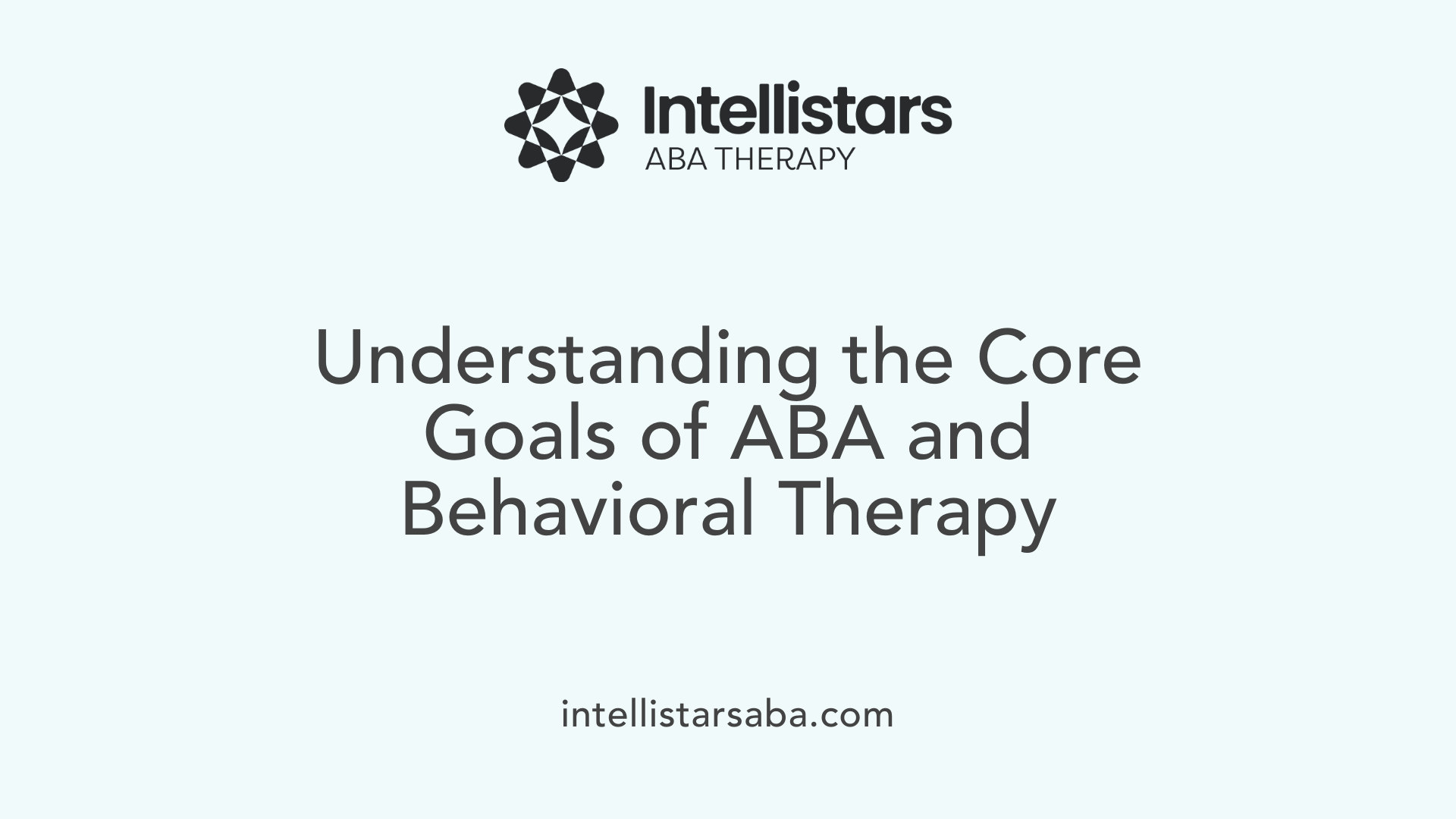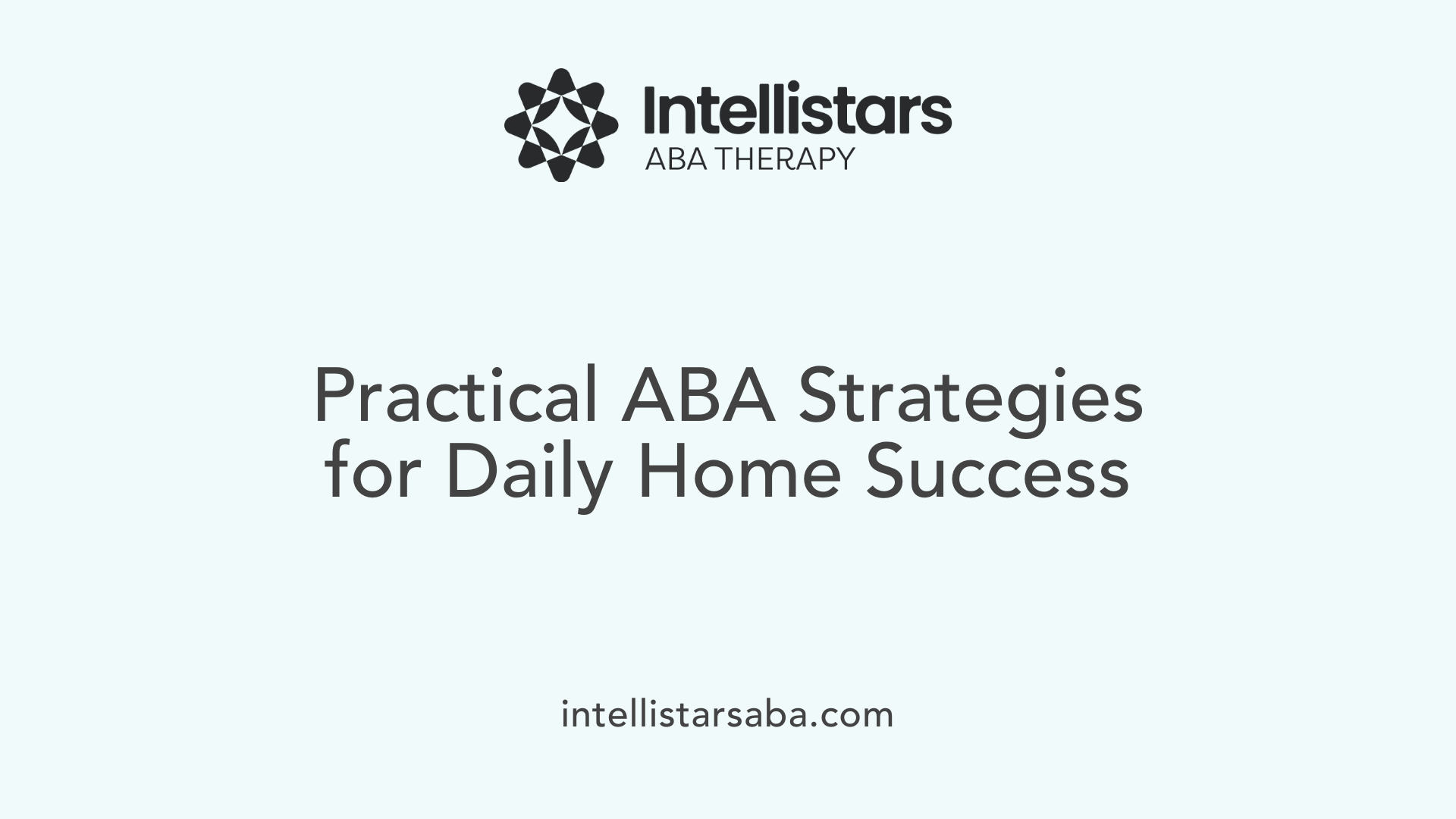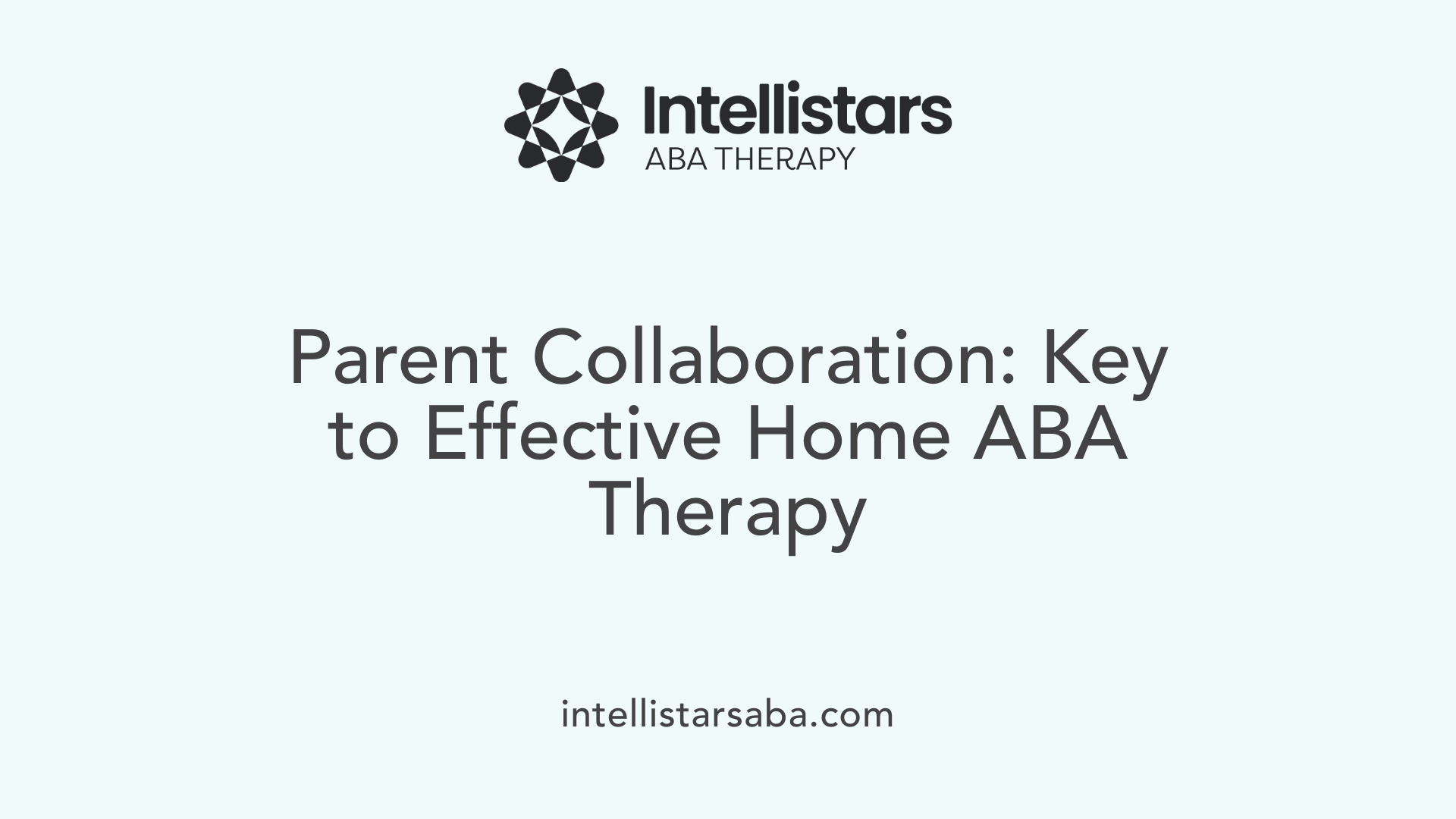Understanding ABA Therapy in the Context of Home Routines
Applied Behavior Analysis (ABA) therapy is a well-established, science-based approach designed to support individuals with autism spectrum disorder (ASD) by improving their social, communication, and daily living skills. The therapy's success greatly depends on consistency and structure, which families can facilitate by integrating ABA strategies into daily home routines. This article explores how daily routines play a crucial role in supporting and enhancing the effectiveness of ABA therapy at home, helping children with autism gain independence, confidence, and emotional security.
What Is ABA Therapy and How Does It Support Individuals with Autism?
Definition of ABA Therapy
Applied Behavior Analysis (ABA) therapy is a science-based approach used to support individuals with autism by applying principles of learning and behavior. It focuses on teaching skills and modifying behaviors through structured, step-by-step techniques.
Behavioral Principles Used in ABA
ABA uses strategies like positive reinforcement, task analysis, and antecedent-behavior-consequence analysis to increase helpful behaviors and reduce unwanted or harmful ones. These methods help improve communication, social interaction, and daily living skills.
Settings Where ABA Therapy Is Delivered
ABA therapy is versatile and can be delivered in various places including homes, schools, and communities. Well-trained therapists and Board Certified Behavior Analysts (BCBAs) customize the program for each individual’s age, abilities, and needs.
Role of Individualized Programs
Each ABA program is designed specifically for the individual by assessing their skills and preferences. These personalized plans set clear goals, monitor progress regularly, and use data to adjust techniques for optimal outcomes.
Evidence Supporting ABA Effectiveness
ABA is recognized as a best practice by leading health authorities, backed by over 20 studies demonstrating its success, especially when started early and provided intensively over time. The therapy helps children increase independence, develop confidence, and improve a wide range of skills relevant to daily life.
Who Provides ABA Therapy and How Do They Ensure Quality Delivery?

Who typically provides ABA therapy for individuals with autism?
ABA therapy is typically delivered by a specialized team to ensure effective and personalized treatment. At the forefront are Board-Certified Behavior Analysts (BCBAs), who are licensed professionals responsible for designing, supervising, and regularly adjusting individualized treatment programs based on thorough assessments of each child's skills, preferences, and family dynamics.
Supporting BCBAs are Registered Behavior Technicians (RBTs) and trained behavior therapists who carry out the day-to-day interventions. These professionals work directly with children to implement the therapy strategies, such as positive reinforcement and task analysis, while under the close supervision of the BCBA to maintain treatment fidelity and quality.
What settings are used for delivering ABA therapy?
ABA therapy is often conducted in natural and familiar environments like the home, school, or community settings. This approach helps children generalize skills learned during therapy into their daily lives. Conducting sessions in these settings strengthens routine consistency and fosters practical application of skills, which is critical for improving independence and managing daily activities effectively.
How is professional training and certification ensured?
Professional credentials like BCBA and RBT require rigorous education, supervised experience, and passing of official certification exams. Continuous professional development and adherence to ethical guidelines are mandatory to maintain these certifications. These standards ensure the therapy delivered is evidence-based, ethical, and tailored precisely to the learner’s needs.
What role do specialized organizations play?
Organizations specializing in autism and behavioral services coordinate the delivery of ABA therapy. They facilitate access to qualified professionals, implement best practices, and maintain high service standards. These organizations also support families by providing resources, facilitating insurance navigation, and ensuring therapies align with the latest scientific research.
Why is individualized, high-quality intervention crucial?
Each child with autism has unique challenges and strengths; therefore, ABA therapy must be customized for each individual. Qualified providers, through detailed assessments and ongoing data collection, tailor treatment goals and methods such as communication development, social skills, and behavior management to fit the child's specific needs. This personalized approach enhances therapy effectiveness and fosters meaningful, lasting progress.
Core Goals of ABA and Behavioral Therapies for Autism

What are the main goals of behavioral therapies like ABA for people with autism?
Behavioral therapies such as Applied Behavior Analysis (ABA) focus on developing a range of essential skills in individuals with autism. These include communication, social skills, self-care, play, motor abilities, and academic achievements. By addressing these areas, ABA aims to help individuals become more independent and improve their quality of life.
How does ABA use positive reinforcement and behavior reduction?
ABA uses positive reinforcement to encourage helpful behaviors by rewarding desired actions, which increases the likelihood they will be repeated. At the same time, it targets the reduction of harmful or disruptive behaviors through techniques that modify the environment and teach alternative, appropriate responses. This balance helps create a supportive learning environment.
Why is data-driven progress monitoring important?
ABA programs are carefully monitored through ongoing data collection, allowing therapists to track improvements and setbacks objectively. This information supports individualized goal setting and necessary adjustments to treatment plans, ensuring that therapy remains effective and responsive to each person's unique needs.
How are goals individualized in ABA therapy?
A qualified behavior analyst (BCBA) customizes the ABA program to fit the individual's age, abilities, preferences, and family circumstances. Goals are personalized to focus on building skills that promote independence and social integration based on assessments and progress reviews.
Altogether, ABA therapy strives to empower individuals with autism by enhancing their communication, social, and daily living skills, while systematically increasing positive behaviors and reducing challenges, all within a framework of continuous evaluation and customized treatment.
How Specialized Companies Enhance ABA Therapy Delivery
How do specialized companies contribute to delivering effective autism behavioral therapies?
Specialized companies play a crucial role in providing high-quality, effective ABA therapy for children with autism. They develop personalized programs that are rooted in evidence-based practices, ensuring each child receives tailored interventions. This personalization involves detailed assessments by qualified professionals such as Board Certified Behavior Analysts (BCBAs), who customize therapy goals based on the child's skills, preferences, and family context.
These companies employ trained behavior therapists, including Registered Behavior Technicians (RBTs), who implement treatment plans using proven ABA techniques like positive reinforcement, task analysis, and antecedent-behavior-consequence (A-B-C) frameworks. Regular supervision by BCBAs guarantees treatment fidelity and allows adjustments to improve outcomes.
Additionally, specialized companies strictly adhere to regulatory requirements and quality standards, ensuring compliance with health laws and ethical guidelines. This compliance promotes safety and professionalism, protecting the interests of children and families.
Coordination with healthcare providers and insurers is another critical aspect. These companies navigate insurance coverage processes, including Medicaid plans where applicable, to help families access medically necessary ABA services. This support facilitates therapy continuity and financial planning.
Through these comprehensive services — developing individualized plans, employing trained staff with supervision, ensuring regulatory compliance, and managing healthcare coordination — specialized companies effectively enhance consistency and quality of ABA therapy. Ultimately, this leads to better skill development, increased independence, and improved quality of life for children with autism.
The Importance of Established Daily Routines in ABA Therapy at Home
Routine as a Source of Emotional Security
Daily routines provide essential emotional security for children with autism. When children know what to expect, they feel safer and more in control of their environment. This sense of security is particularly important for reducing stress and creating a calm atmosphere conducive to learning.
Reduction of Anxiety Through Predictability
ABA therapy emphasizes predictability through consistent routines. Visual schedules, first/then boards, and transition cues break down daily tasks into manageable steps, helping reduce anxiety by making changes and transitions less intimidating.
Support for Skill Mastery Through Repetition
Routine supports skill mastery by enabling the repetition necessary for learning. ABA methods use structured daily schedules to reinforce positive behaviors and gradually build independence with consistent practice and positive reinforcement.
Facilitation of Transitions and Behavioral Expectations
Clear expectations and routines encourage positive behavior and ease transitions between activities. ABA strategies like task analysis and visual supports guide children through each step, making shifts in routine smoother and more manageable.
Routines Creating a Safe and Confident Learning Environment
By maintaining consistent routines, children gain confidence and flexibility in facing daily tasks. This structure fosters a secure learning environment where children with autism can thrive and develop new skills more comfortably and effectively.
Practical ABA Strategies to Integrate into Home Routines

How are visual supports like schedules and boards used in home ABA?
Visual schedules, first/then boards, and transition cues are powerful tools in ABA therapy that help children with autism understand and anticipate daily routines. These visual supports reduce anxiety by creating clear, consistent expectations. For example, a visual schedule might outline the sequence of activities during mealtime or bedtime, helping the child transition smoothly from one task to the next.
What role does task analysis play in daily activities?
Task analysis involves breaking down complex routines into smaller, manageable steps. This strategy simplifies daily activities such as brushing teeth or completing chores, making them less overwhelming. Each step is taught one at a time, allowing the child to build skills progressively and gain confidence.
How is positive reinforcement applied to encourage desirable behaviors?
Positive reinforcement methods such as token systems and behavior chart stickers motivate children by rewarding desirable behaviors. For instance, a child might earn a sticker for completing each step of a bedtime routine, which can be exchanged for a preferred activity or prize. This approach increases the likelihood that positive behaviors will be repeated.
How do timers and consistent cues assist in transitions?
Using timers and consistent auditory or visual cues helps children anticipate transitions between tasks, reducing resistance and stress. For example, a timer set for five minutes before mealtime signals that it’s time to prepare to eat, smoothing the shift from play to dinner.
What are examples of ABA strategies applied in everyday routines?
- Mealtimes: Visual schedules showing each step from setting the table to finishing the meal, combined with positive reinforcement for trying new foods.
- Bedtime: A first/then board outlining bedtime activities like brushing teeth first, then storytime, paired with praise or rewards.
- Chores: Task analysis breaking down cleaning tasks, with token reinforcement encouraging consistent participation.
These strategies foster independence, reduce anxiety, and make routines predictable and enjoyable for children with autism.
Parent Involvement and Collaborative Care in Home ABA Therapy

What Role Do Parents Play in Reinforcing Routines and Consistency?
Parents are essential in reinforcing the routines and consistency established during ABA therapy. By maintaining structured activities such as mealtimes, bedtimes, and chores at home, parents help create a predictable environment that supports their child's learning and reduces anxiety. Using tools like timers, visual schedules, and positive reinforcement systems helps children understand expectations and encourages positive behaviors.
How is ABA Integrated Into Everyday Activities?
Integrating ABA strategies into daily routines enables children to practice skills naturally and frequently. Home-based ABA therapy includes incorporating fun activities such as color matching and social games that promote communication and social skills. This approach strengthens skill acquisition and decreases challenging behaviors by embedding learning opportunities in everyday contexts.
Why is Collaboration With BCBAs and Therapists Important?
Collaboration with Board Certified Behavior Analysts (BCBAs) and registered behavior technicians (RBTs) ensures that therapy is individualized, scientifically supported, and ethically applied. These professionals design customized programs, monitor progress through data, and adjust interventions to suit the child's evolving needs. Parents working closely with ABA providers receive guidance tailored to their family situation, improving therapy outcomes.
What Are the Benefits of Parental Training and Coaching?
Parental training equips caregivers with the strategies and tools necessary to effectively implement ABA techniques at home. Coaching from professionals helps parents confidently support their child's routines, manage behaviors, and handle transitions. This empowerment fosters a supportive home environment aligned with therapeutic goals.
How Does Parent Involvement Enhance Skill Generalization Across Settings?
Active parent participation promotes the generalization of learned skills beyond therapy sessions. Consistency in applying ABA principles at home and in community settings helps children adapt behaviors in varied environments, increasing their independence and flexibility. Strong parent-therapist partnerships create a cohesive learning experience that bridges therapy and daily life.
Addressing Challenges Through Routine Flexibility and Engagement

Managing transitions and sensory sensitivities
ABA therapy effectively supports children with autism by managing difficult transitions and sensory sensitivities through structured routines. Visual schedules, first/then boards, and transition cues offer predictability, helping reduce anxiety during changes in activities.
Gradually introducing changes to build resilience
While ABA routines provide consistency, therapists introduce changes gradually and flexibly. This approach helps children build resilience by learning to adapt to new situations while still feeling secure within a predictable framework.
Incorporating fun, engaging activities to promote skills
Integrating enjoyable activities like color matching and social skills games into routines makes learning more appealing. These activities support the development of communication, social abilities, and daily living skills, keeping children motivated and actively engaged.
Using routines to reduce stress and promote control
Steady routines foster emotional security and a sense of control over the environment. This stability reduces stress and anxiety, enabling children to learn and practice new skills with greater confidence.
Development of communication and social skills through games
Games and interactive activities incorporated in ABA therapy encourage practice of social interactions and communication in a natural, playful context. This enhances language skills and social confidence essential for everyday life.
Summary: Daily Routines as the Backbone of Effective ABA Therapy at Home
Consistent daily routines are foundational to the success of ABA therapy delivered at home. They provide children with autism a stable, secure environment where learning new skills becomes less daunting, and challenging behaviors are minimized. By integrating evidence-based ABA strategies such as task analysis, visual supports, and positive reinforcement into everyday activities, families can reinforce therapy goals outside of clinical settings. The role of trained professionals and specialized companies ensures personalized treatment plans that empower parents and caregivers to maintain structure while adapting routines to meet individual needs. Ultimately, a well-established routine not only supports skill acquisition and independence but also promotes emotional well-being and resilience in children with autism, making home-based ABA therapy an effective and compassionate approach.
References
- How ABA Therapy Helps with Daily Routines
- The Role of Routine in ABA Therapy: Helping Children Thrive
- Incorporating ABA Therapy Activities into Daily Routines at ...
- Applied Behavior Analysis (ABA)
- ABA Therapy Services Serving Manhattan & Brooklyn
- ABA services for Autism / DD
- Applied Behavior Analysis (ABA)
- Applied Behavior Analysis (ABA)
- Applied Behavior Analysis (ABA)
- The Controversy Around ABA






